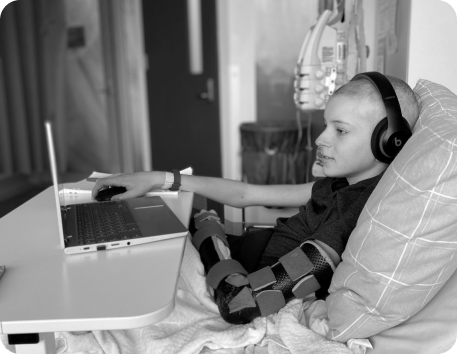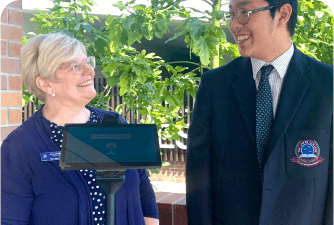
We can’t afford to wait until they’re well. School connection keeps sick students in sync socially, helping to nurture their resilience and their identity as learners, eases anxiety about school absence and belonging, and addresses school avoidance. Critically, school connection offers hope by proving to sick kids that they are worth educating. But schools find supporting sick students during absences a significant challenge. We are here to support education leaders with research, resources, and technology to achieve continuity of education for your students experiencing serious illness and school absence.



Up to one in three children live with chronic illness, meaning that many students have an illness serious enough to affect their education and attendance. In schools across Australia this equates to up to 1,200,000 students, with an estimated 70,000 missing months to years of school. The student support team (parents, doctors, teachers, hospital school teachers) is obliged to keep the student’s transitions between school and treatment in mind at all times, supporting continuation of their education and social connections across all places of care and addressing school avoidance.
Students with medical conditions aren’t spending more time in hospitals. While the number of kids in hospitals is increasing, many access outpatient care and are isolating at home while symptomatic or in recovery and aren’t connected with a hospital school. During a hospital admission, students may have some access to hospital schooling, but hospital schools can struggle to ensure continuity of connection to their school curriculum, peer connection and community. The school of enrolment is responsible for the student under the Disability Standards for Education.
When schools consider the whole world as their classroom, students with medical conditions who cannot physically attend school, can “be at school” from wherever they are. Studies indicate the following predictors of success: collaborating with healthcare services; early intervention and planning; integrated and consistent provision of education across home, school and medical settings (including coordination with hospital schools); individualised, formalised and actionable agreements and adjustments documenting support; measures addressing the student’s social and emotional needs; and continuous connection between a student and their regular school through real-time telepresence when absent.
Unlike more static remote learning technologies (such as Zoom, Teams, or FaceTime, etc.), robots give a two-way video and audio connection between the absent student and school. Robots can be moved within and between classrooms and to other parts of the school to join in assembly or events. The absent student can drive and manoeuvre the robot themselves, without the teacher needing to manage the connection, providing presence and maximising the student’s agency. Connection can ease student anxiety and help address and mitigate school avoidance. Real-time connection should continue until the student is well enough to be at school again.
We are committed to affirming the identity of the young people we work for and stand in proud solidarity with the LGBTQIA+ community.
©2023 Missing School Inc. All rights reserved.